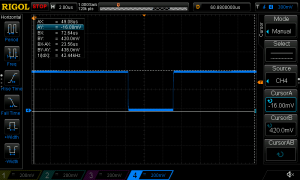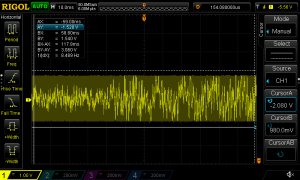I recently did a few livestreams where I tested the new Supergun from the Behar Bros called the Hayabusa. I’d previously liked and tested their previous supergun, (the Shogun) and this performs similarly, with one difference: Instead of DB15, it has PlayStation 1/2 controller ports. Unfortunately, the built in controller adapter seems to have about 26ms of latency ;/ At about $100, it seems to be a good value and mostly* safe to use, but the lag is too much for hardcore gamers…especially the average person who’d be using a supergun. UPDATE July 2024: There’s a new firmware that lowers the controller latency. Check out a written summary of the streams below and the unedited original test stream is embedded above. Here’s the updated lag post: https://www.retrorgb.com/hayabusa-supergun-latency-fix.html
Purchase the Hayabusa: https://www.beharbros.com/product-page/hayabusa
Shogun Manual**: https://www.beharbros.com/_files/ugd/1a1987_545b4bfb960742e286d82f0fbd945ed1.pdf
**The Hayabusa manual isn’t finished yet, but this is really close and has all the important info.
Lag Test Results: https://docs.google.com/spreadsheets/d/1pkJGn5RRrsU97j6lVs0OgnRO6bqbIZhkQBu6ZVTpLZs/edit?usp=sharing
Before we begin, a quick note about the * above: Superguns are not for beginners. While the Hayabusa (and Shogun) are as safe as can be, there’s nothing stopping someone from connecting their arcade board and turning the video POTs (and PSU voltage) all the way up, sending high voltage to your SCART device. If this is your first time using one, find an expert to help you get set up. If you understand how superguns work, consider this one completely safe to use.
Okay, onto the review…and we might as well start with video signals, since that’s what the above warning was about. The Hayabusa’s default sync setting is 75ohm-level, meaning the sync voltage should be safe for all SCART devices; I measured at 435mV:

The RGB voltage was just under 700mV at 5v with a Neo Geo MV1C. This is not only safe, but a good brightness for both CRT’s and flat-panels:

There are a few things to note about this though. First, before doing a thorough video voltage test, I adjusted the Meanwell RT-85A PSU until the voltage meter built into the Hayabusa read exactly 5v. This was to try and get exact values for the board I was testing. That said, if you accidentally crank up the voltage on your PSU before powering it on, you’ll send too much voltage to your device. This is a warning for ALL superguns, not just this one.
Next, the blue POT was set too high from the factory. Not enough to cause damage, but enough that you’d have to manually turn the adjustment POT down. This isn’t really a complaint, as it could happen to any supergun, but more of a reminder to be careful…and when in doubt, it’s always better to go down (dimmer) than up – If this happens to you, do NOT turn the dimmer colors up, turn the brightest color down. Unless you have a scope of course.
Video quality overall was good! Here’s a screen capture taken via the RT5x in Neo Geo mode, at 1080p5x, NN doubled to 4K via Photoshop:

After video, came the audio testing. As with their Shogun, the audio had a protection circuit that prevented high voltage from passing through. Here’s a scope capture showing that even with the arcade board’s volume all the way up, it was still capped at a safe 3v. If you’d like a better explanation of this test, please check out this video: https://youtu.be/DHoA2vVZh8Q

The last test was the controller ports. I wanted to make sure I got precise measurements, so I asked Louis from Zezretro to join me and learn how to use the MiSTer Controller Test Kit. The whole stream is below, but the unfortunate conclusion is after 10,000 controller press readings, the average latency was 24ms – About a frame and a half of lag on average, varying between almost zero and 32ms.
We tested, re-tested and verified as much as possible, but the tests were always the same. Sadly, that means this supergun isn’t for hardcore arcade enthusiasts, but casual players might not have an issue.
If you’d like the full, in-depth explanation, check out the livestream below:
